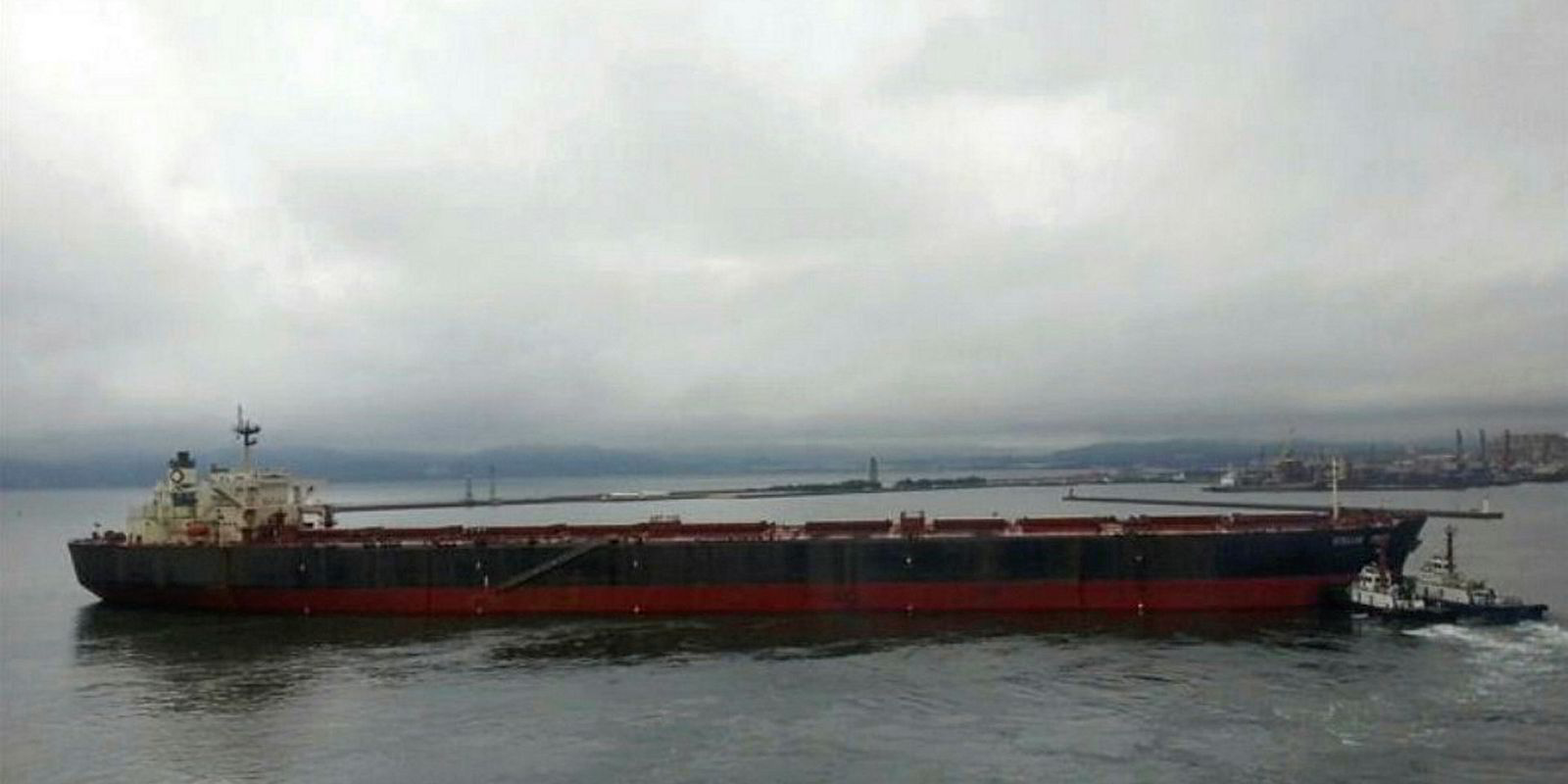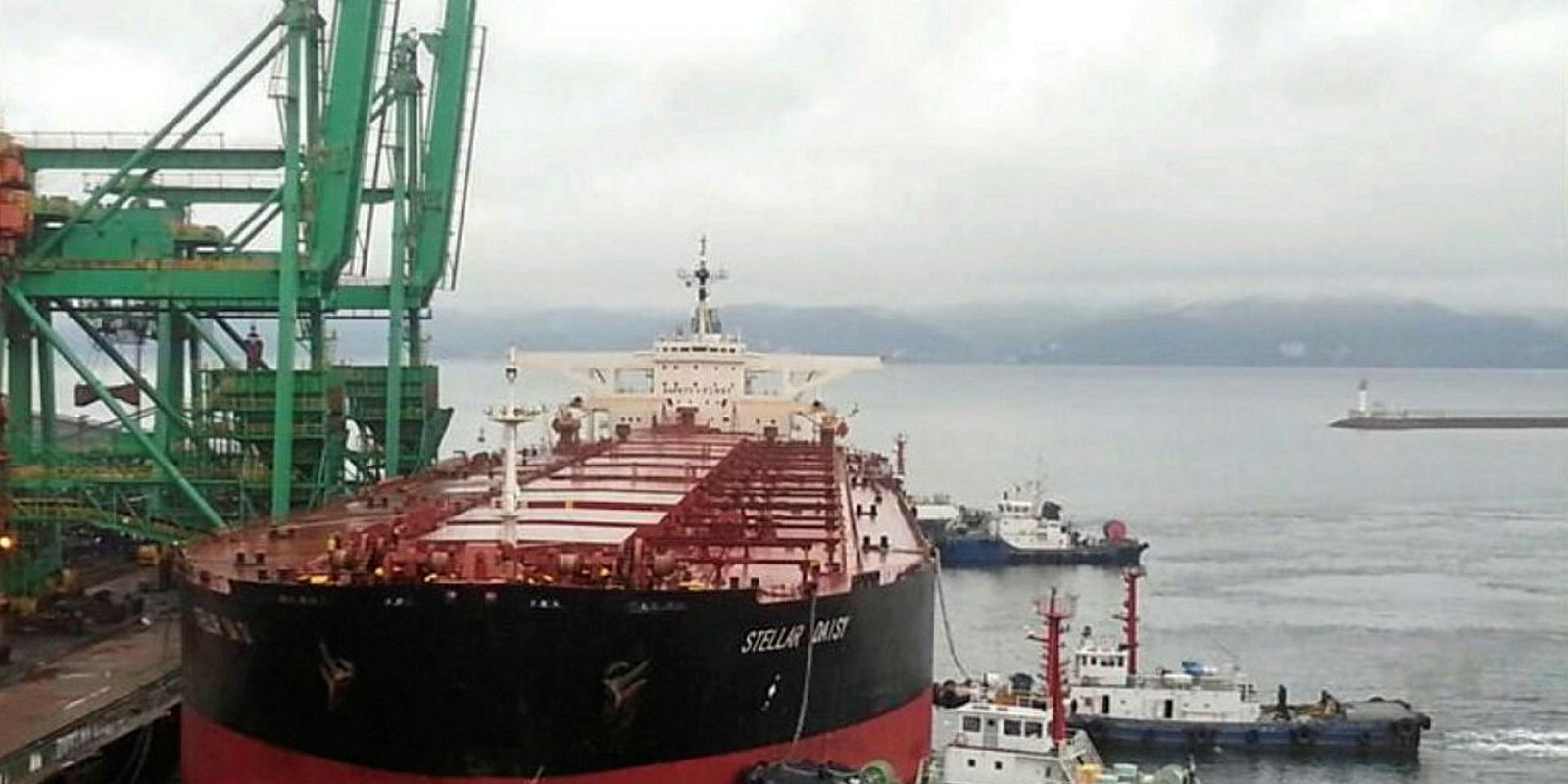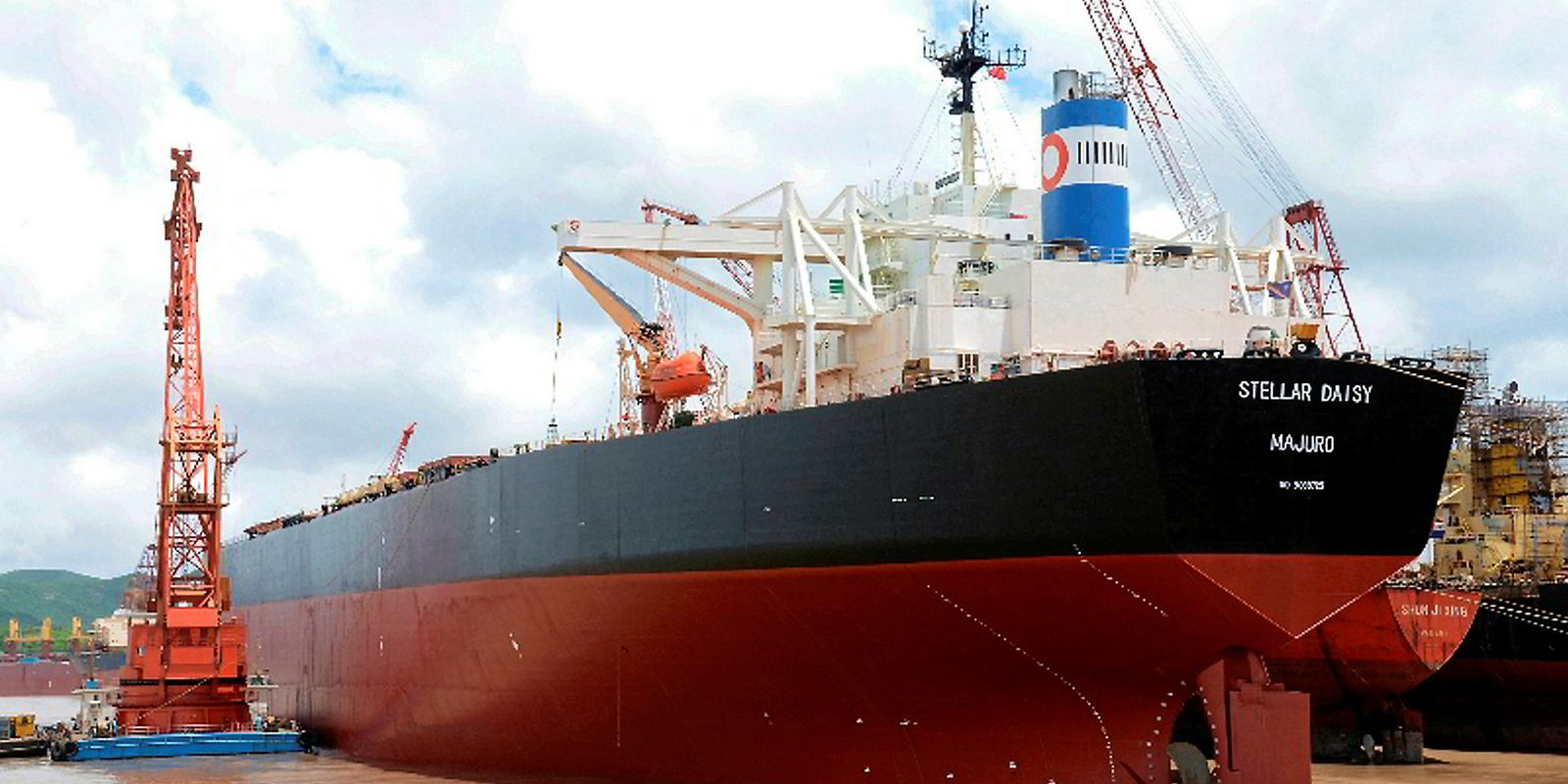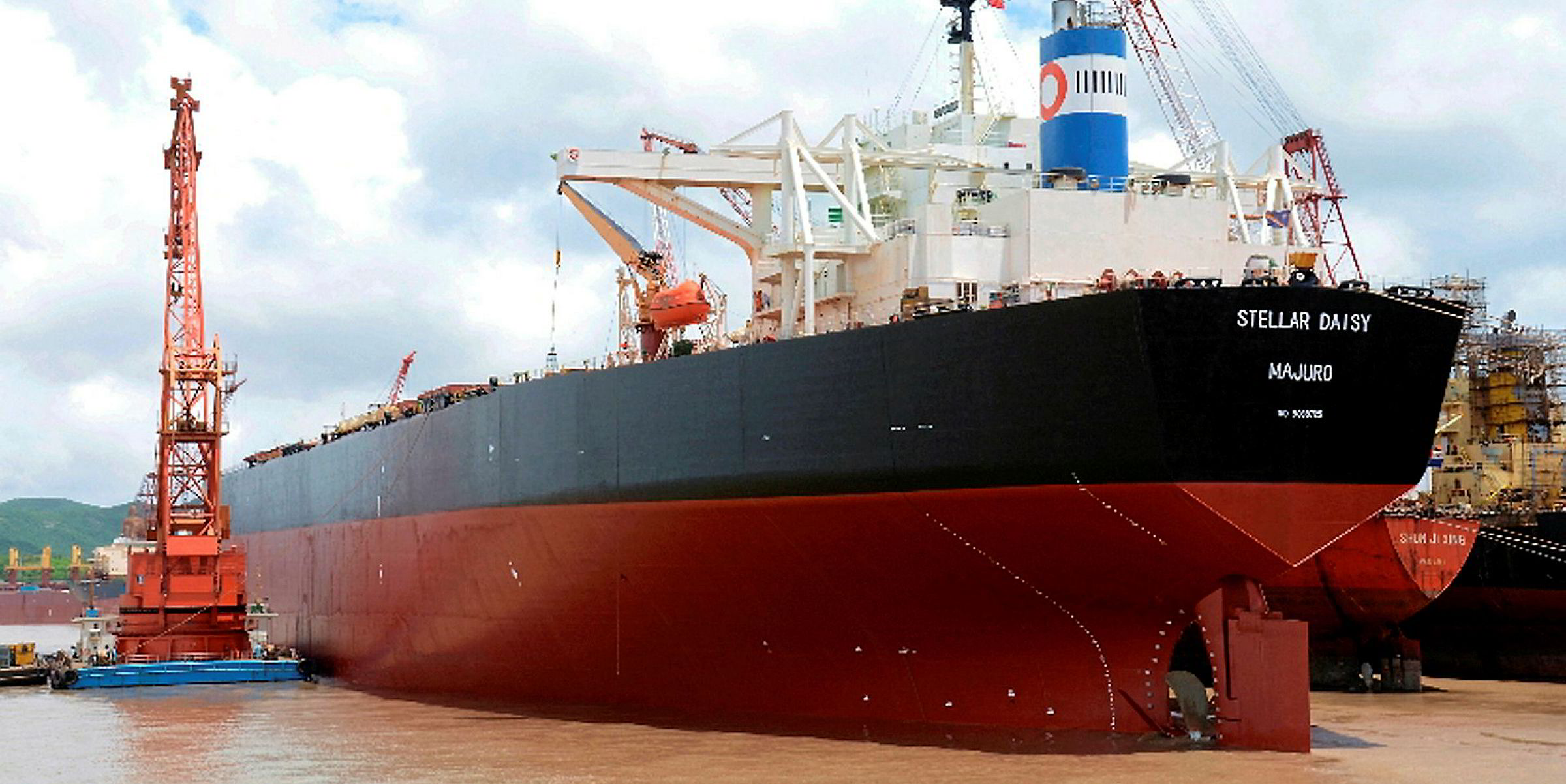The Marshall Islands' flag state report into the loss of the 1993-built Stellar Daisy, along with the lives of 22 seafarers, did not pull any punches, even though the industry had to wait two years after the disaster to discover its hard-hitting conclusions.
The report candidly describes the poor structural condition of many such veteran ships, which, beginning around 2008, were converted from early 1990s-built, single-hull tankers to ore carriers, almost entirely at Chinese yards.
After the Stellar Daisy tragedy, the Marshall Islands inspected all of the converted VLOCs under its flag and found the 23 to 25-year-old high-tensile steel on many of these ships was prone to cracking — and in critical areas such as frames, longitudinals and brackets.
It is likely that it was this type of structural failure that caused the Stellar Daisy to lose side shell plating in the Atlantic in March 2017, the Marshall Islands analysis concludes.
Within moments of the damage to the side shell, the ship suffered water ingress and flooding through the ballast water tanks and cargo holds — so rapidly, that only two crew members managed to survive.
Preventative measures, including enhanced inspections and repairs, are now in place to make sure there is no repeat of the Stellar Daisy casualty.
But these only came after the disaster, despite earlier classification society inspections that had revealed the extent of fatigue cracking, corrosion and other problems with the Stellar Daisy and some other ships of its type.
Despite the measures now in place, most would conclude that the findings of the report alone are enough to raise questions about whether it is safe to continue trading converted vessels, some of which are more than 25 years old.

There are plenty of reasons why the entire converted tanker to bulker fleet is already well past its sell-by date and should be sailing straight to the scrapyard.
There are around 50 bulkers built between 1993 and 1995, which is roughly the build date of the VLCCs and other tanker types that were converted to bulkers from 2008 onwards.
It's clear the mainstream dry bulk industry already has concluded that bulkers should not reach the age of 25, so why are converted ships carrying on?
Of the 50 bulkers, 45 are conversions. The rest are conventional bulkers. It's clear the mainstream dry bulk industry already has concluded that bulkers should not reach the age of 25, so why are converted ships carrying on?
Some may argue that major steel renewal took place as part of the conversion, making the ships structurally younger than their age suggests
But the hulls of these conversions are still predominantly tanker ones that were designed based on the tolerances required to carry crude oil from the Middle East to Far East, Europe or the US.
These same hulls are now operating in the much more structurally demanding conditions of a voyage twice the distance through the treacherous south Atlantic seas to the Far East, carrying high density iron ore, loaded at high speed in northern Brazil.
And, despite the stresses that these converted ships are operating under, as the Marshall Islands report reveals, for technical reasons they were built to lower flooding survivability standards than the International Convention for the Safety of Life at Sea (Solas) requires of modern bulkers.
Back in 1995, if they had been converted to double hull and remained as tankers, they would not have been allowed to trade past the age of 25.
Tellingly, there are no tankers built before 1995 operating in the mainstream tanker trades — and yet, there are 1993-built converted tanker hulls carrying iron ore between Brazil and China.
At the next special survey, the requirement to fit ballast water treatment systems is likely to mean that this generation of converted vessels will soon be heading for the scrapyard anyway. But that is already too late for the crew of the Stellar Daisy.





